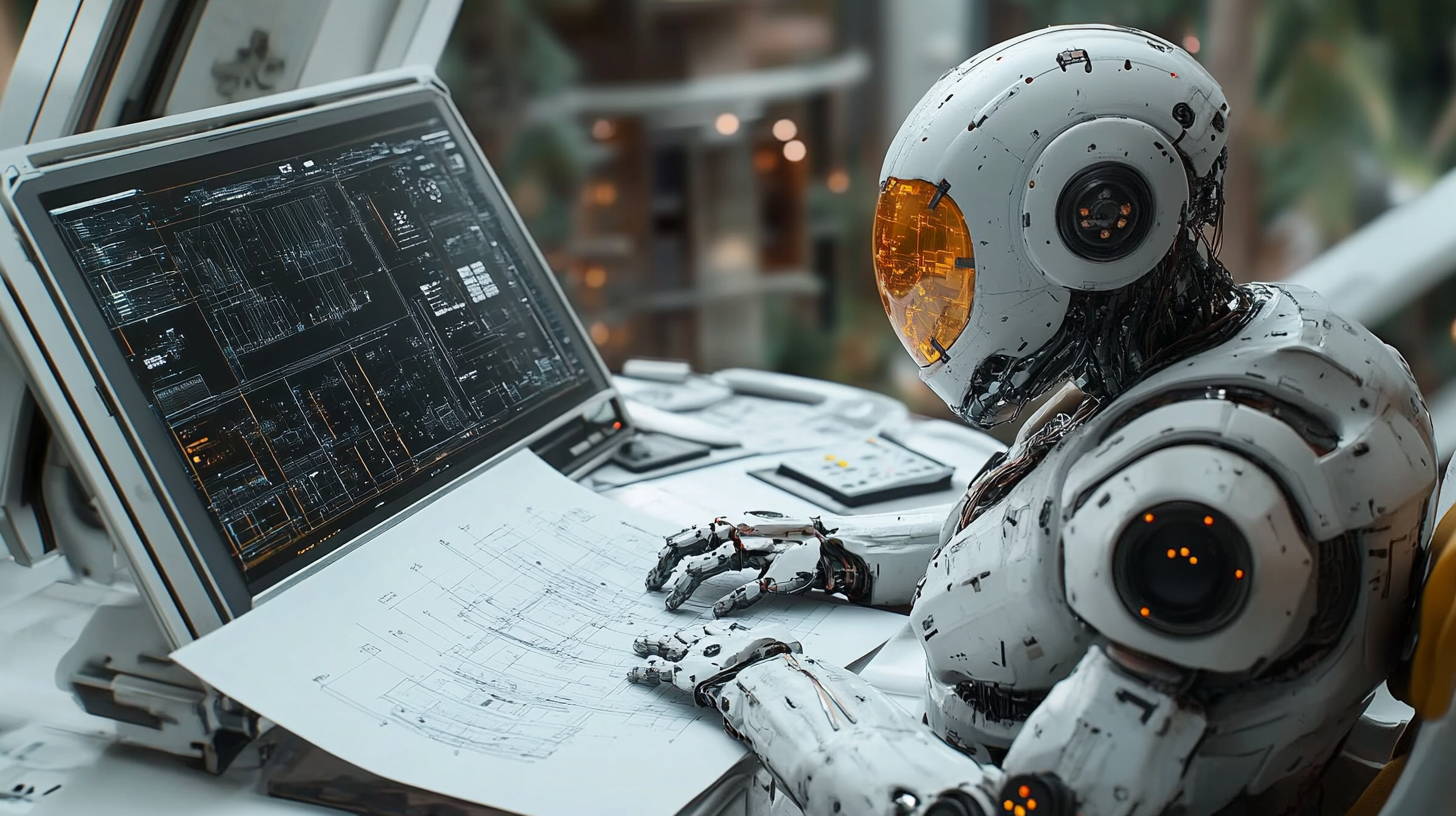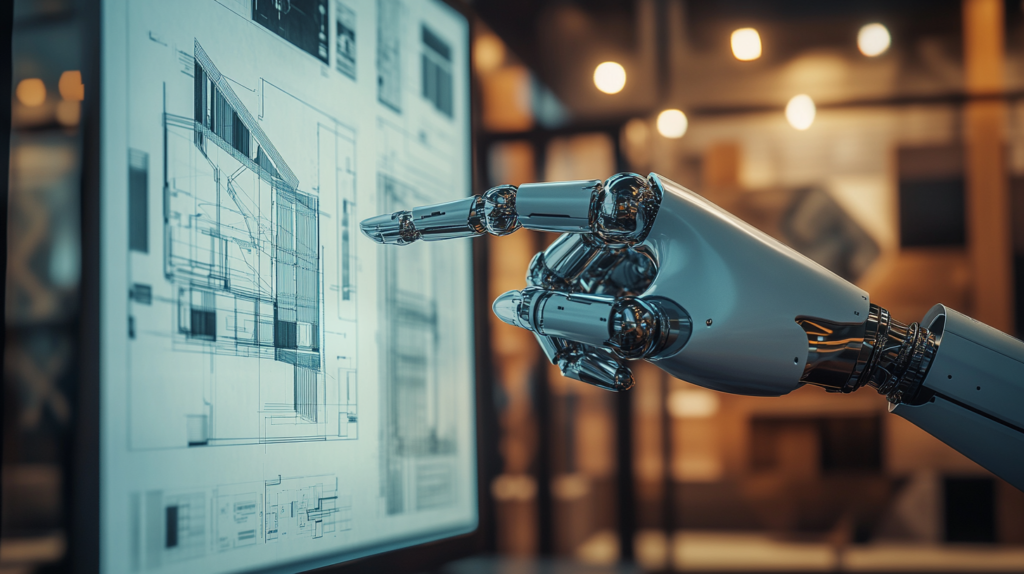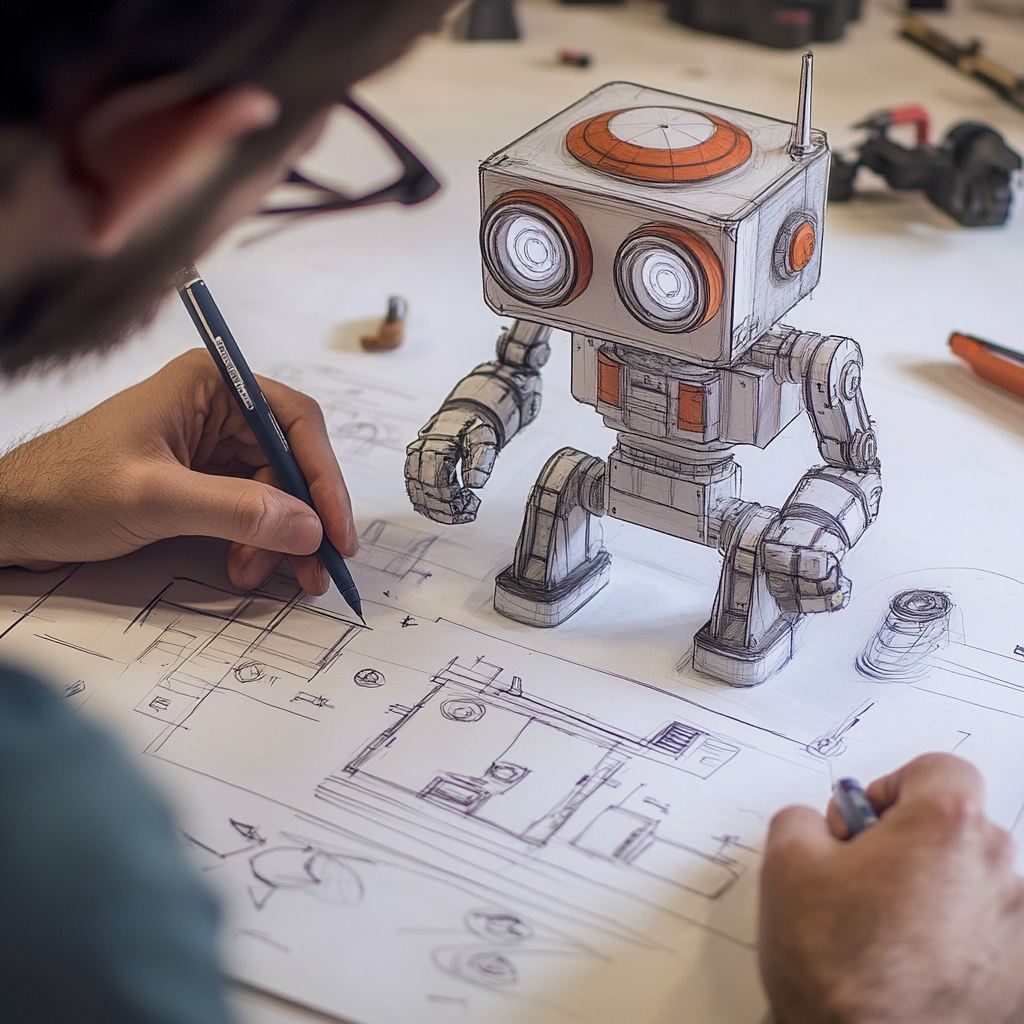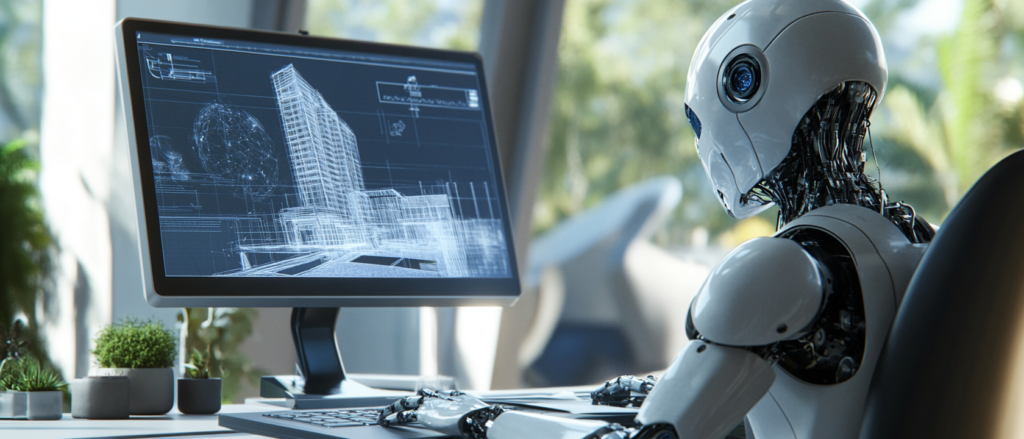
Embracing the Future: How AI is Revolutionizing Architectural Design
Introduction
Imagine stepping into a world where the boundaries of architectural design are limitless, where creativity meets cutting-edge technology to redefine the spaces we inhabit.
This is the promise of Artificial Intelligence (AI) in architecture, a field that is rapidly evolving thanks to innovations like Midjourney and DALL-E 2.
In a recent presentation, Tim Fu, an architect and AI expert, shed light on how these tools are transforming the way architects approach design, from the initial spark of inspiration to the final touches of a masterpiece.
Join us as we delve into the fascinating intersection of AI and architecture, exploring how these advancements are reshaping our built environment and the role of architects in this new era.
AI Tools in Architectural Design
Introduction to Midjourney and DALL-E 2
AI tools like Midjourney and DALL-E 2 have emerged as powerful allies for architects, offering unprecedented capabilities in design exploration and generation.
These tools use advanced algorithms to create visual content based on textual descriptions, allowing architects to bring their ideas to life with remarkable speed and precision.
Midjourney: This tool specializes in generating high-quality images from text prompts, making it ideal for conceptualizing architectural forms and spaces. Architects can input detailed descriptions of their design intentions, and Midjourney responds with a variety of visual interpretations.
DALL-E 2: Developed by OpenAI, DALL-E 2 is renowned for its ability to create realistic and diverse images from textual inputs. It excels in generating novel forms and exploring creative possibilities, providing architects with a wealth of design options to consider.
Rapid Exploration of Ideas
One of the most significant advantages of AI tools in architecture is their ability to accelerate the design process.
Traditional design methods often involve iterative sketching, modeling, and refinement, which can be time-consuming.
AI tools, on the other hand, allow architects to explore a multitude of ideas quickly and efficiently.
Accelerated Design Process: By inputting various design parameters and descriptions, architects can generate numerous concepts in a fraction of the time it would take using manual methods.
This rapid exploration enables architects to consider a broader range of possibilities and make more informed design decisions.
Benefits of Quick Idea Generation: The ability to generate ideas quickly has several benefits.
It allows architects to respond more effectively to client feedback, adapt to changing project requirements, and iterate on designs with greater agility.
Additionally, quick idea generation can foster innovation by encouraging architects to explore unconventional and creative solutions.

Generation of Novel Forms
AI tools are not only faster but also more creative in generating novel architectural forms.
The algorithms behind these tools can produce designs that push the boundaries of traditional architecture, inspiring new ways of thinking about space, form, and function.
Unique Designs: AI-generated designs often exhibit unique characteristics that may not have been considered through conventional design methods.
These novel forms can inspire architects to think outside the box and explore new aesthetic and functional possibilities.
Examples of Innovative Forms: There are numerous examples of AI-generated architectural forms that have captivated the design community.
From organic, biomimicry-inspired structures to futuristic, geometrically complex buildings, AI tools have demonstrated their potential to create visually stunning and functionally innovative designs.
The Role of Human Input in AI-Driven Design
Importance of Human Decision-Making
While AI tools offer tremendous potential, the role of human input remains crucial in the design process.
Architects bring a unique blend of creativity, experience, and judgment that AI tools cannot replicate.
Human decision-making is essential for guiding AI tools and refining their outputs to meet project goals and client expectations.
Necessity of Architects’ Guidance: Architects play a vital role in setting the parameters and goals for AI tools.
They provide the context, constraints, and creative direction that guide the AI-generated designs.
Without this human input, AI tools would lack the necessary context to produce meaningful and relevant designs.
Refining AI Outputs: The outputs generated by AI tools are not always perfect or complete.
Architects must review, evaluate, and refine these outputs to ensure they meet the project’s requirements and align with the overall design vision.
This iterative process of refinement is where human creativity and judgment truly shine.
Guiding AI Tools
Effectively using AI tools in architectural design requires a strategic approach.
Architects must understand how to leverage these tools to their fullest potential while maintaining control over the design process.
Techniques for Effective Use: To guide AI tools effectively, architects should focus on clear and concise input parameters, iterative refinement, and continuous evaluation.
By providing detailed descriptions and constraints, architects can steer AI tools towards generating relevant and useful designs.
Case Studies of Successful Collaboration: There are numerous examples of successful AI-human collaboration in architecture.
These case studies demonstrate how architects can use AI tools to enhance their design capabilities, explore new possibilities, and achieve innovative outcomes.
Refining AI Outputs
The process of refining AI-generated designs involves a balance between efficiency and creativity.
Architects must review the outputs, identify areas for improvement, and make the necessary adjustments to achieve the desired results.
Reviewing and Improving AI Outputs: Architects should approach AI-generated designs with a critical eye, evaluating their strengths and weaknesses.
This review process helps identify areas that require further refinement and improvement.
Balancing AI Efficiency and Human Creativity: While AI tools offer efficiency, human creativity is essential for adding the final touches and ensuring the design aligns with the project’s goals.
This balance between AI efficiency and human creativity is crucial for achieving successful architectural outcomes.

AI in Various Aspects of Architecture
Design Development
AI’s impact on architecture extends beyond the initial design phase.
It plays a crucial role in design development, helping architects refine and optimize their designs for better performance and functionality.
Enhancing Design Development: AI tools can assist in analyzing and optimizing various aspects of design development, such as structural integrity, energy efficiency, and spatial organization.
By simulating different scenarios and evaluating their outcomes, AI tools help architects make informed decisions and improve their designs.
Examples of AI Applications: There are numerous examples of AI applications in design development, ranging from structural analysis and optimization to energy modeling and simulation.
These applications demonstrate AI’s potential to enhance the design development process and achieve better architectural outcomes.
Construction
AI is also revolutionizing the construction industry, offering innovative solutions to improve efficiency, safety, and sustainability.
Improving Construction Processes: AI tools can help optimize construction schedules, manage resources, and monitor progress in real-time.
By analyzing data and providing insights, AI tools enable more efficient and effective construction processes.
Case Studies of AI in Construction: There are several case studies of AI applications in construction projects, showcasing how AI tools have been used to improve efficiency, reduce costs, and enhance safety.
These case studies highlight the potential of AI to transform the construction industry and achieve better outcomes.
Sustainability
Sustainability is a critical consideration in modern architecture, and AI tools are playing an increasingly important role in promoting sustainable design practices.
Promoting Sustainable Architecture: AI tools can help architects design buildings that are more energy-efficient, environmentally friendly, and sustainable.
By simulating different design scenarios and evaluating their environmental impact, AI tools enable architects to make informed decisions and achieve sustainable outcomes.
Examples of AI-Driven Sustainable Design: There are numerous examples of AI-driven sustainable design solutions, ranging from energy-efficient building envelopes to smart building systems that optimize energy consumption.
These examples demonstrate AI’s potential to promote sustainability in architecture and achieve better environmental outcomes.

Q&A Session Highlights
AI’s Impact on Creativity
One of the key questions addressed in the Q&A session was the impact of AI on architectural creativity.
While some may view AI as a threat to human creativity, Tim Fu emphasized that AI tools can actually enhance and complement human creativity.
Influencing Architectural Creativity: AI tools offer new ways of exploring and generating design ideas, inspiring architects to think creatively and innovatively.
By providing a wealth of design options and possibilities, AI tools can stimulate human creativity and foster a more imaginative approach to architecture.
Addressing Concerns: There are concerns about AI replacing human creativity in architecture.
However, Tim Fu reassured the audience that AI tools are meant to augment, not replace, human creativity.
The true value of AI lies in its ability to complement and enhance human capabilities, enabling architects to achieve more creative and innovative outcomes.
Copyright Issues
The use of AI in architecture also raises important questions about copyright and intellectual property. As AI tools generate designs based on input parameters, there are concerns about who owns the rights to these designs.
- Understanding Copyright Challenges: The copyright issues surrounding AI-generated designs are complex and multifaceted. It is essential to understand the legal implications and ensure that the rights of all parties involved are protected.
- Potential Solutions: To address copyright challenges, it is crucial to establish clear guidelines and frameworks for the use of AI tools in architecture. This includes defining the roles and responsibilities of architects and AI tools, as well as ensuring that intellectual property rights are appropriately managed and protected.
The Future of the Architectural Profession
The final question addressed in the Q&A session was the future of the architectural profession in the age of AI.
Tim Fu provided insights into how AI is likely to shape the profession and offered advice on how architects can adapt and thrive in this new landscape.
Predictions for the Future: AI is expected to have a significant impact on the architectural profession, transforming the way we design, build, and think about our built environment.
As AI tools become more advanced and integrated into architectural practices, they will offer new opportunities and challenges for architects.
Adapting and Thriving: To thrive in an AI-driven future, architects must embrace the potential of AI tools while continuing to value and leverage their human creativity and expertise.
This involves staying informed about the latest developments in AI, continuously learning and adapting, and finding ways to integrate AI tools into their design processes effectively.
Conclusion
In conclusion, AI is transforming the field of architecture in numerous ways, offering powerful tools that enhance design processes, improve efficiency, and promote sustainability. However, the human element remains irreplaceable, and architects must continue to value creativity, interaction, and ethical considerations.
By embracing AI while addressing its challenges, architects can harness the best of both worlds to create meaningful and impactful designs.
As Tim Fu emphasized, the future of architecture lies in the harmonious integration of AI tools and human creativity, enabling us to achieve innovative and sustainable outcomes.

Leave a Reply